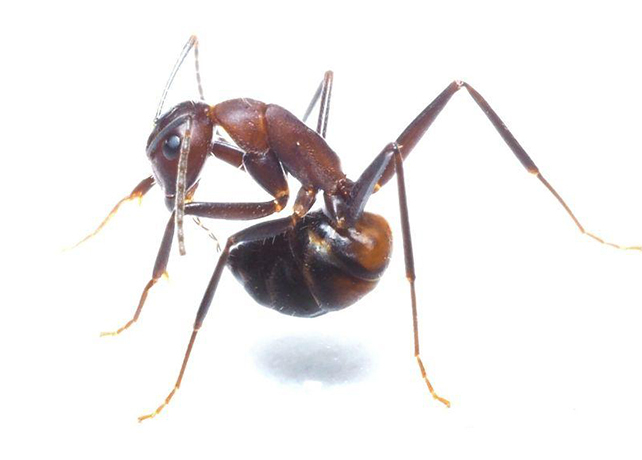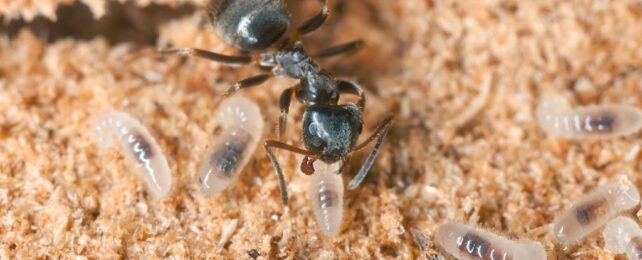Ant mothers are the queens of tough love. They simply don't have time to coddle their sick young.
If a newly hatched black garden ant is exposed to a pathogen, researchers in the US have found the queen will slurp up and gulp down every bit of her offspring's maggoty little body before it becomes contagious.
This act of 'hygienic cannibalism' stops other larvae and the queen herself from falling ill while sealed up together in a nest. It also ensures the mother has more energy to produce eggs the next time around.
"Ant queens start their colonies alone and essentially starve themselves to raise their first workers," explains biologist Flynn Bizzell from the University of Oxford.
"The queens who produce the most workers have the best chances of survival, so being able to eat and recycle infected larvae back into brood production means valuable resources are not wasted."
Bizzell and his colleague, University of Oxford biologist Christopher Pull, have found that worker ants in established colonies do not show the same cannibalistic tendencies.
In some ant species, workers and soldiers have actually been found treating ill or injured peers with medicine or life-saving operations. But those measures won't do in the nursery of a black garden ant (Lasius niger), especially when the colony is just getting started.
In this vulnerable state, queens can't just drag sick larvae away from their nest. They are sealed up inside with their young, packed to the rafters, with no one else to help.
The risk of an infection spreading in this environment is too severe for a queen to ignore. When she detects a pathogen in her nest, she takes out every infected larva she can find as soon as possible.
If need be, the researchers found the queen will cannibalize 92 percent of infected larva. Those queens that do so can lay 55 percent more eggs the next time around.
In their recent experiments, Bizzell and Pull exposed five larvae per queen to the infectious spores of a fungal pathogen.
The larvae were then left alone for 24 hours so they could develop the lethal infection, although at this point, they were not yet contagious. Once the infected larvae were returned to their nest, Bizzell and Pull watched as the queens took action.
For several hours, the mothers chewed. They consumed almost all of the sick individuals, while leaving most of the healthy ones alive.
The fungal pathogen seemed to have no impact on the queens, even after they ate it. Bizzell and Pull suspect that this is because the ants are somehow protecting themselves from the inside.
Before and after the queens were observed tucking into their young, the two biologists noticed some ants grooming a gland on their abdomens. This gland produces an acidic, antimicrobial venom, and by swallowing the venom, ants could possibly neutralize the pathogen in their gut.

In further experiments, when queens were presented with sick larvae that had already died and begun to produce fruiting bodies with infectious spores, the queens groomed and sprayed the cadavers with venom from their gland.
This stage of infection, however, is clearly quite dangerous to the queen. Even after spraying the larvae, the queen died from the infectious disease almost 80 percent of the time.
When the queen did survive, her brood didn't. They were all lost to secondary infections. So acting early to prevent spread is important.
The findings provide evidence that queen ants are eating their young as an adaptive response to disease, protecting their own lives as well as the lives of their offspring, now and to come.
There's nothing quite like the care of a mother.
The study was published in Current Biology.
